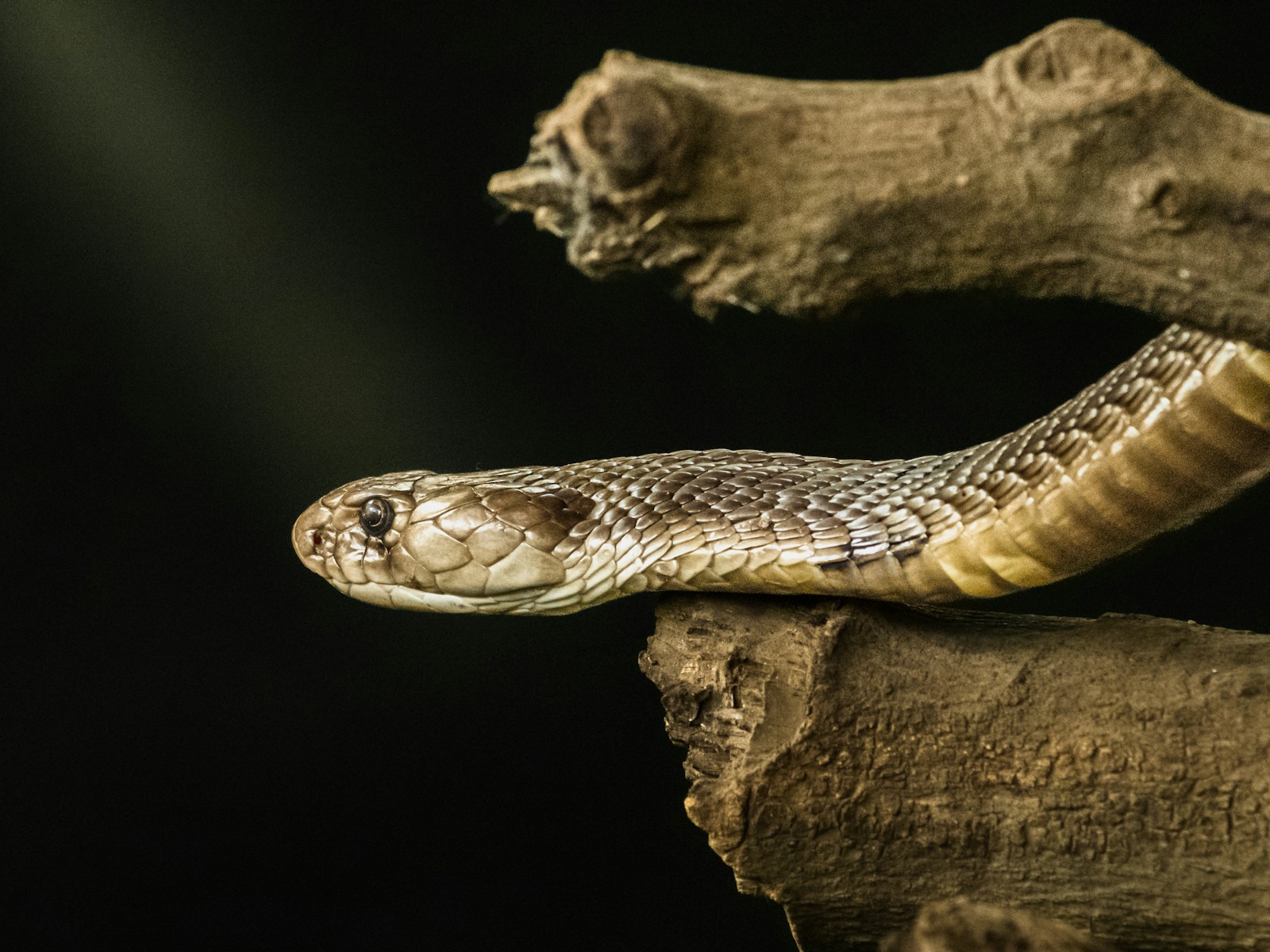In the dense, dappled shadows of tropical forests, nature has perfected the art of deception. Among its most remarkable masters of disguise is the Gaboon viper, a snake whose evolutionary journey has led to one of the most effective camouflage systems in the animal kingdom. This extraordinary reptile doesn’t merely blend with its surroundings—it transforms into them, taking on the intricate patterns and textures of the forest floor’s decaying foliage so convincingly that even the keenest observers can walk within inches of it unaware. Its body, a canvas of browns, tans, and russets arranged in complex geometric patterns, creates an optical illusion that breaks up its outline against the leaf litter. This remarkable adaptation not only serves as protection from predators but enables the snake to become a deadly ambush predator itself, vanishing completely until the moment it strikes.
The Master of Forest Floor Disguise
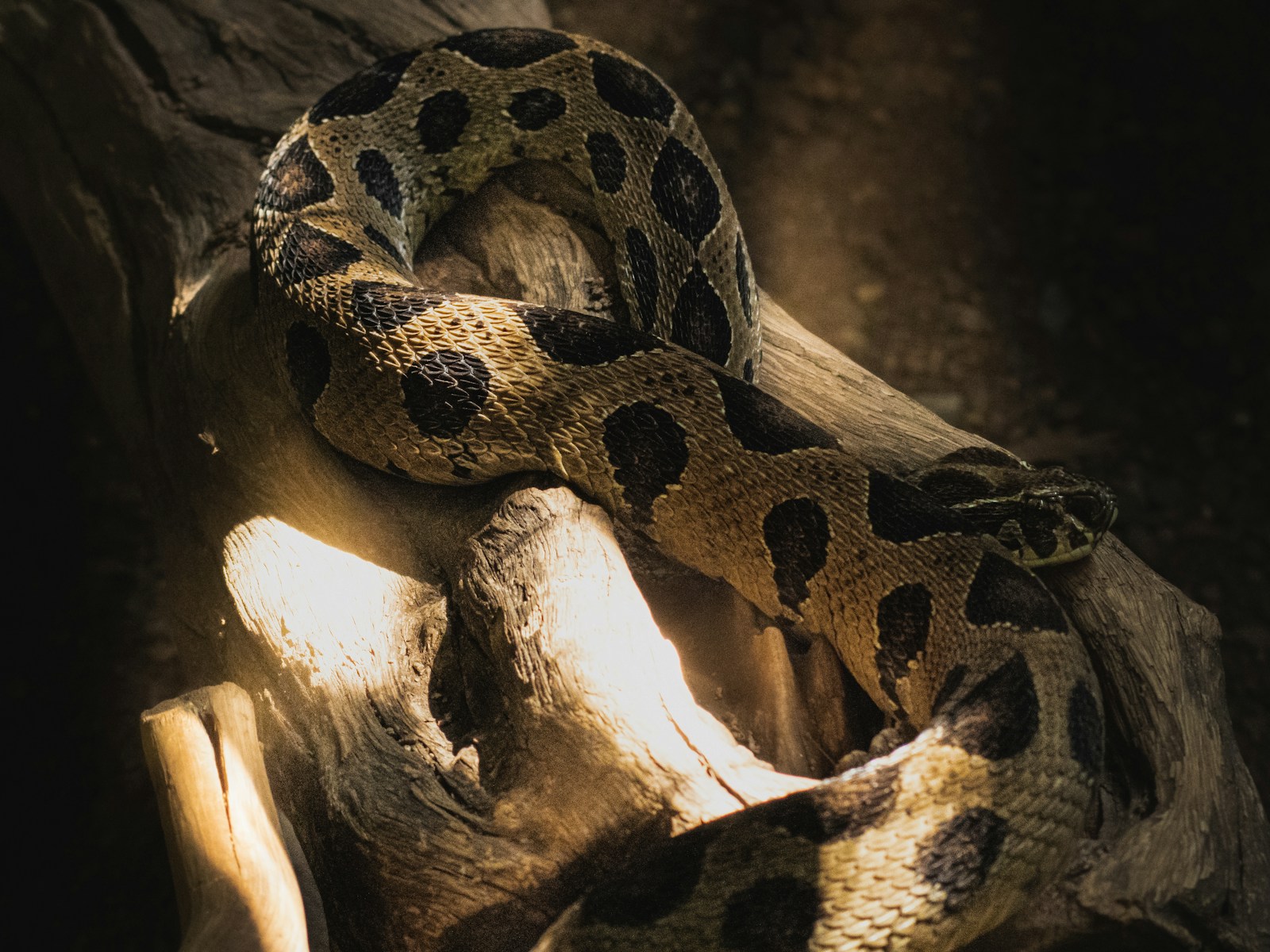
The Gaboon viper (Bitis gabonica), native to the rainforests and woodlands of sub-Saharan Africa, possesses perhaps the most sophisticated camouflage of any snake species on Earth. Its body features an intricate mosaic of geometric patterns in various shades of brown, beige, purple, and pink that precisely mimic the appearance of dead leaves, twigs, and forest detritus. The snake’s broad, triangular head—the widest of any venomous snake relative to its body—lies flat against the ground, its edges breaking up into the surrounding leaf litter. Most remarkably, the Gaboon viper’s scales have evolved a textured, rough appearance that mimics not just the color but the three-dimensional quality of decaying vegetation, complete with what appear to be leaf veins and irregular edges. This perfection of disguise represents millions of years of evolutionary refinement, creating a predator that disappears completely within its habitat.
Evolutionary Adaptations for Perfect Concealment

The Gaboon viper’s camouflage represents a triumph of evolutionary adaptation, developed through natural selection over countless generations. Unlike many snakes that simply match background colors, the Gaboon viper employs disruptive coloration—complex patterns that break up the outline of the body, making it difficult for both predators and prey to recognize its shape. The snake’s scales feature microscopically rough surfaces that eliminate the shine typical of many reptiles, preventing light reflection that might otherwise reveal its presence. Perhaps most ingenious is the snake’s behavioral adaptation of remaining motionless for extraordinarily long periods—sometimes weeks at a time—further enhancing its resemblance to inanimate forest debris. Even the viper’s breathing has evolved to be nearly imperceptible, with minimal body movement that might otherwise betray its presence among the truly lifeless leaves surrounding it.
Physical Characteristics Beyond Camouflage
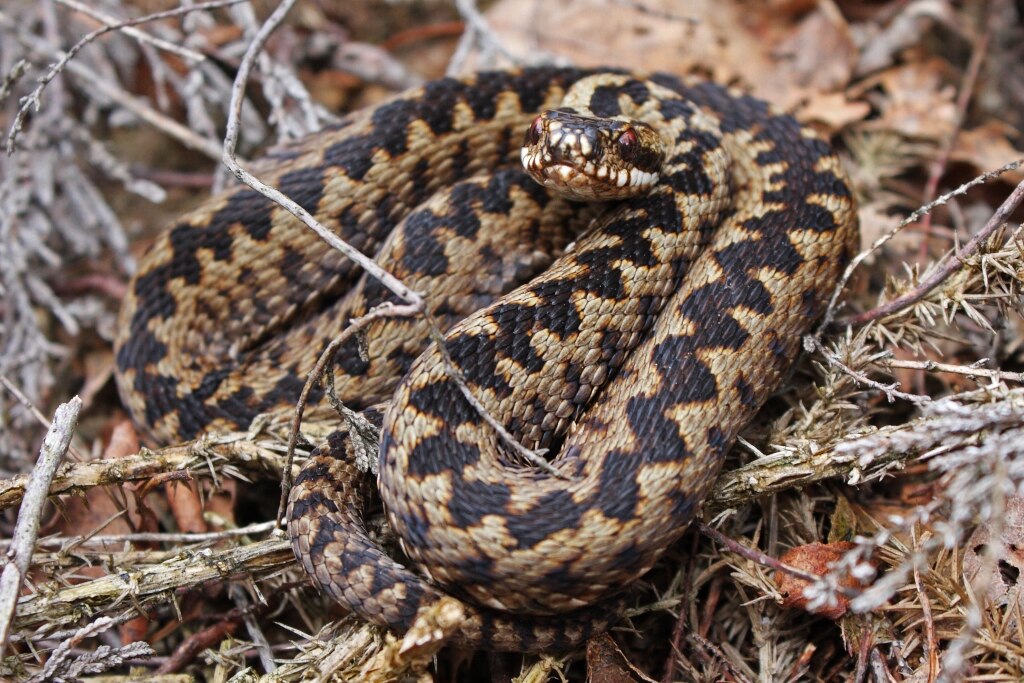
While its leaf-mimicking appearance draws immediate attention, the Gaboon viper possesses several other remarkable physical characteristics that make it a biological marvel. This snake holds records as the heaviest viper in Africa and the snake with the longest fangs in the world, measuring up to two inches—fangs so long they fold against the roof of the mouth when not in use. Adult Gaboon vipers typically reach lengths of 4-6 feet but can grow to over 7 feet, with exceptionally thick, heavy bodies that can weigh up to 25 pounds. Their heads feature distinctive, horn-like projections on the snout, adding to their unusual appearance and possibly enhancing their camouflage by mimicking plant structures. The Gaboon viper also possesses the highest venom yield of any venomous snake, capable of delivering massive amounts of a highly potent hemotoxic venom that breaks down blood cells and tissue.
Habitat and Distribution: Where Leaf-Litter Camouflage Thrives
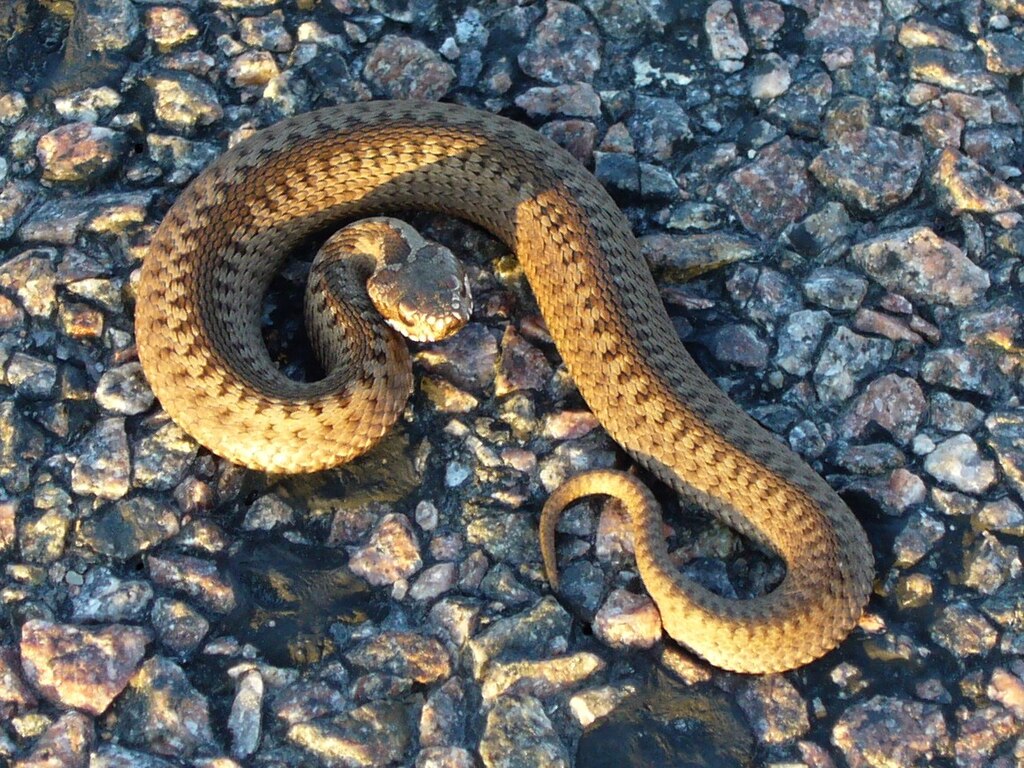
The Gaboon viper’s extraordinary camouflage evolved specifically for the environments where it naturally occurs—primarily the forest floors of tropical and subtropical regions across central, eastern, and western Africa. These snakes thrive in rainforests, woodlands, and sometimes savanna edges where leaf litter accumulates in significant depth and variety. Their range extends from Guinea and Sierra Leone eastward to Uganda and parts of Tanzania, with separate populations in eastern and western Africa showing slight variations in pattern and coloration. The ideal habitat for these snakes features a thick layer of decomposing vegetation, dappled light filtering through the canopy, and sufficient humidity to support their preferred amphibian and small mammal prey. Interestingly, their camouflage is most effective in older growth forests with diverse leaf shapes and colors rather than in plantation environments, highlighting how specifically adapted they are to natural forest ecosystems.
Hunting Strategy: The Deadly Patience of an Invisible Predator
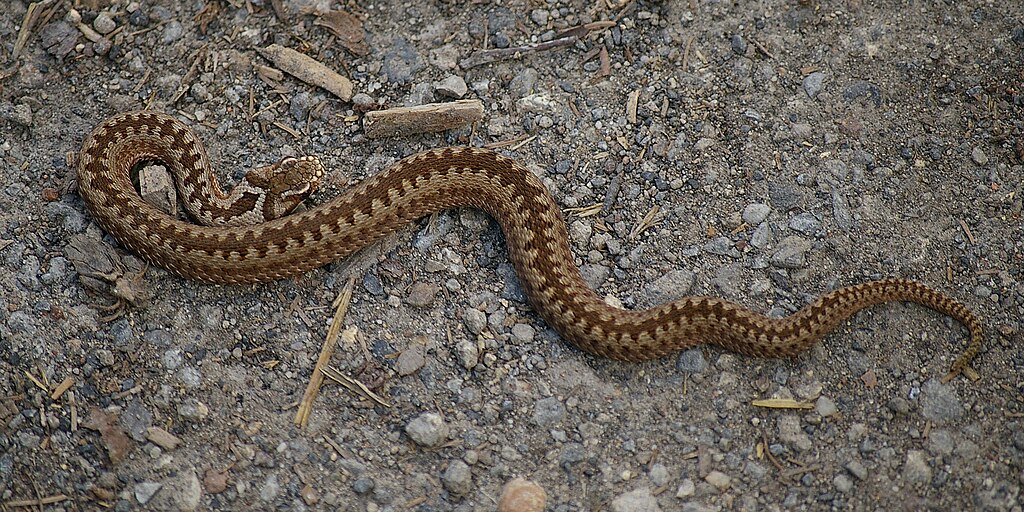
The Gaboon viper’s hunting strategy epitomizes the ambush predator approach, elevated to an art form through its unparalleled camouflage. These snakes may remain in exactly the same position for weeks, waiting with extraordinary patience for prey to pass within striking distance. Their hunting technique relies completely on surprise—the snake becomes one with the forest floor, virtually invisible until the moment it launches its lightning-fast strike. When prey approaches, the Gaboon viper can accelerate from absolute stillness to strike in less than 0.2 seconds, a speed almost impossible for the human eye to track. After delivering its powerful venom through the longest fangs in the snake world, the Gaboon viper typically releases its prey rather than holding on, then follows the scent trail of the dying animal. This methodical approach to hunting reflects millions of years of evolutionary refinement, allowing the snake to conserve energy while maximizing hunting success.
Venom Characteristics and Medical Significance
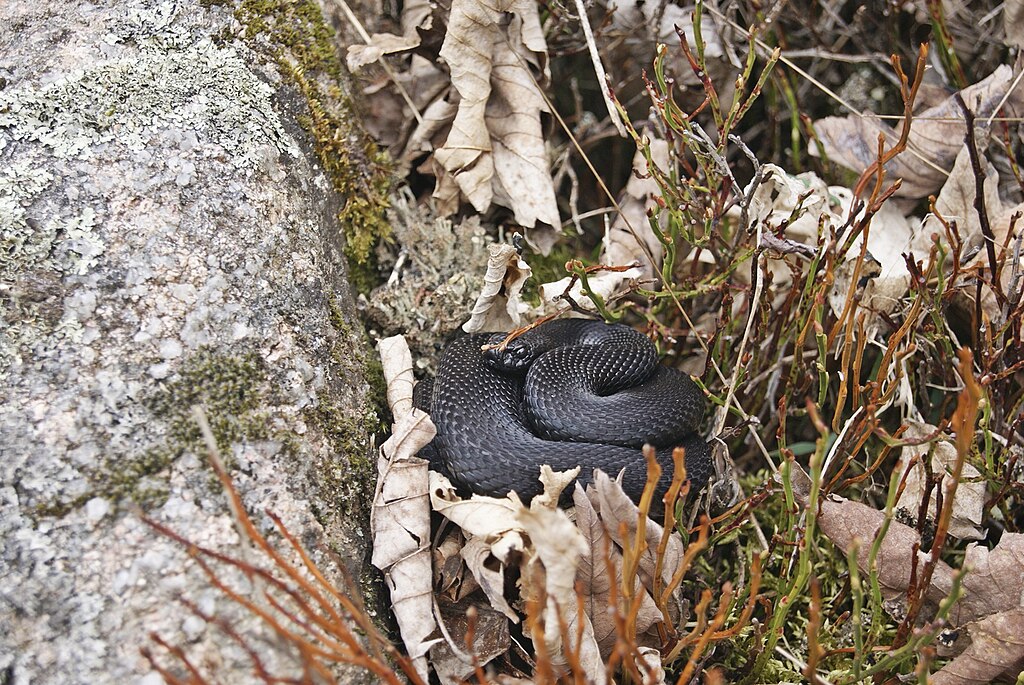
The venom of the Gaboon viper matches the impressiveness of its camouflage in both potency and quantity. Each strike can deliver the largest venom yield of any snake—up to 2 grams of dried venom in a single bite, compared to most vipers’ yield of 100-250 mg. This powerful venom contains a complex mixture of toxins, primarily cytotoxic and hemorrhagic components that destroy tissue and prevent blood from clotting. When bitten, victims experience immediate, excruciating pain followed by rapid swelling, blistering, and necrosis of tissue surrounding the bite area. Without prompt medical intervention with appropriate antivenom, bites can lead to catastrophic bleeding, organ damage, and death. Paradoxically, medical researchers have identified compounds in Gaboon viper venom with potential pharmaceutical applications, including blood pressure medication and pain management treatments, demonstrating how even deadly natural substances can yield benefits to human medicine.
Reproduction and Life Cycle Mysteries
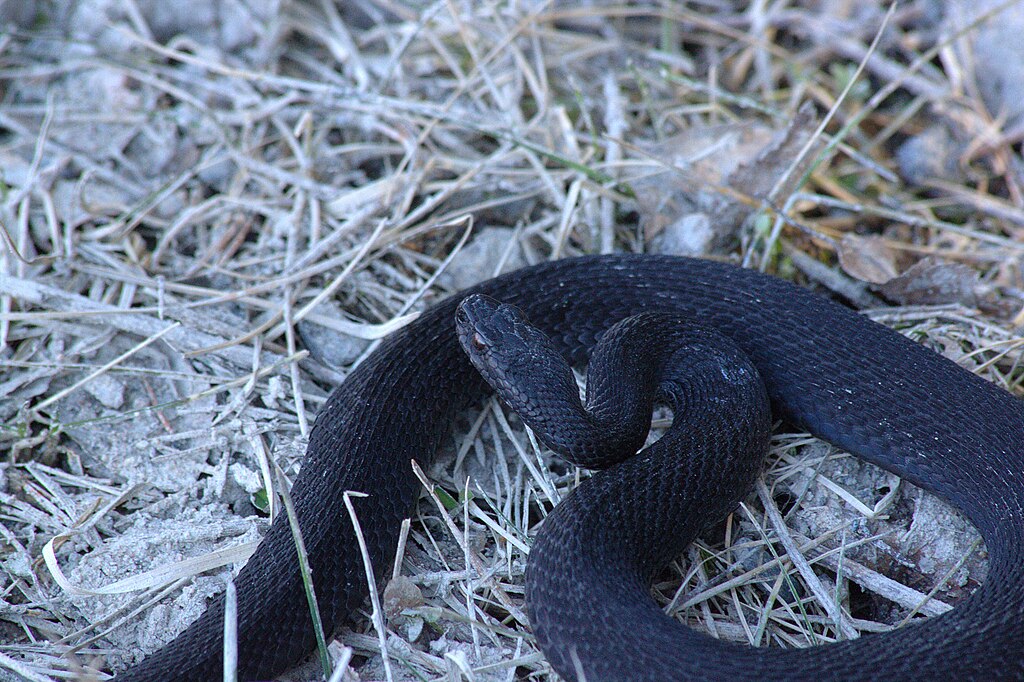
The reproductive strategy of the Gaboon viper reflects the measured pace of its ambush lifestyle, with several unusual adaptations that distinguish it from other snakes. Unlike many reptiles that lay eggs, Gaboon vipers are ovoviviparous, meaning eggs develop inside the female’s body until she gives birth to fully-formed young snakes. A female may carry between 8-43 offspring, depending on her size and health, with the reproductive cycle typically occurring every two to three years. Remarkably, male Gaboon vipers engage in ritual combat during breeding season, intertwining their bodies in wrestling matches that rarely cause injury but establish dominance without exposing them to predators. The young vipers emerge already equipped with fully functional venom glands and their characteristic leaf-like patterning, though juveniles tend to have brighter coloration that dulls with age for improved camouflage. Despite their deadliness, young Gaboon vipers face significant mortality, with many falling prey to predators before reaching adulthood.
Scientific Studies on Camouflage Effectiveness
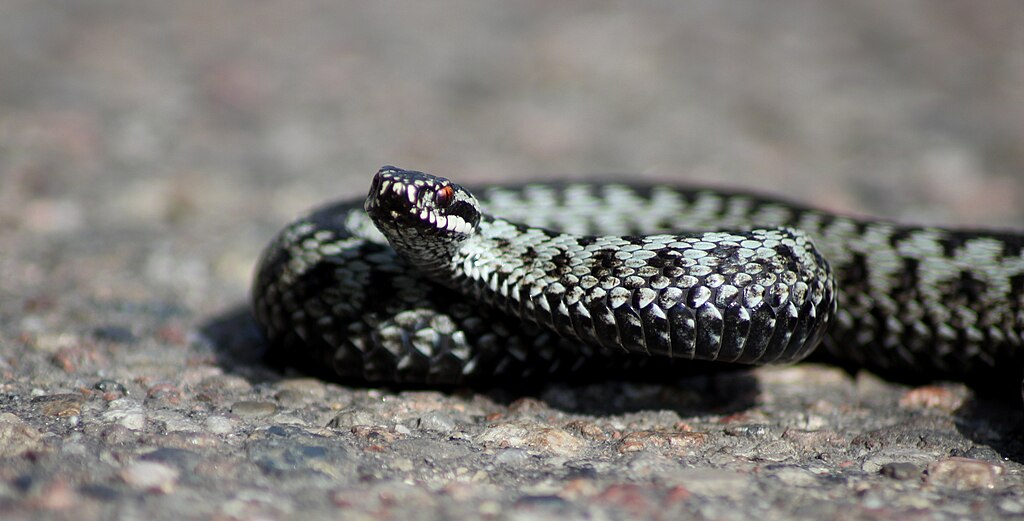
The remarkable camouflage of the Gaboon viper has drawn significant scientific interest, with several studies quantifying just how effective this disguise truly is. In controlled experiments, experienced herpetologists were asked to locate Gaboon vipers placed in natural leaf litter environments, with results showing detection rates of less than 30% even when observers knew approximately where to look. Researcher Dr. James Vonesh of Virginia Commonwealth University documented that even wildlife professionals working in Gaboon viper habitat reported accidentally approaching within inches of the snakes before noticing them. Using sophisticated visual analysis software, scientists have demonstrated that the viper’s pattern creates what is called “edge dissolution,” where the boundaries between snake and background become computationally impossible to distinguish. Motion tracking studies reveal that these snakes can maintain stationary positions for up to 62 days, moving less than three centimeters over this entire period—a level of stillness that further enhances their leaf-like appearance.
Cultural Significance and Human Interactions
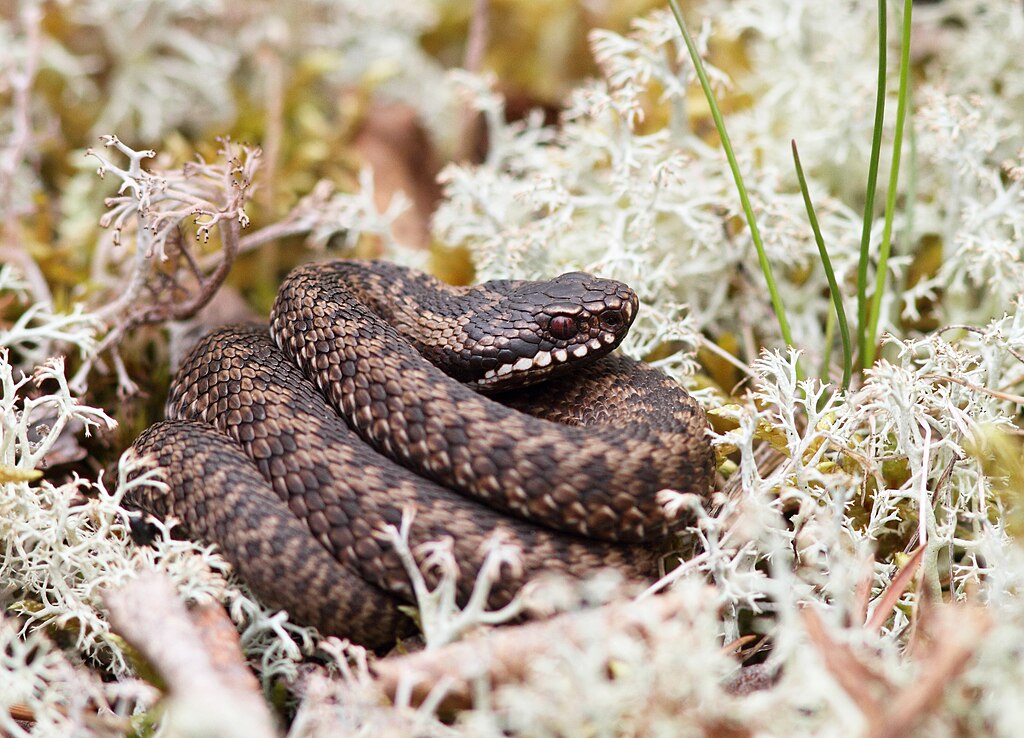
The Gaboon viper holds significant cultural importance across its African range, featuring prominently in folklore, traditional medicine, and spiritual practices. Among certain West African communities, the snake is considered a powerful spirit animal representing patience, hidden strength, and the dangers of underestimating quiet adversaries. Its distinctive geometric pattern appears in traditional textiles and art, particularly in Ghana and Nigeria, where the diamond-shaped markings symbolize wisdom concealed beneath ordinary appearances. Despite their potential danger, these snakes rarely bite humans due to their non-aggressive nature and preference for avoiding confrontation. Most bites occur when the snakes are accidentally stepped on or when handled by collectors or wildlife professionals. Traditional healers across several African cultures claim to use minute quantities of Gaboon viper venom in treatments for chronic pain and circulatory conditions, practices now being studied by ethnopharmacologists for potential medicinal applications.
Conservation Status and Threats
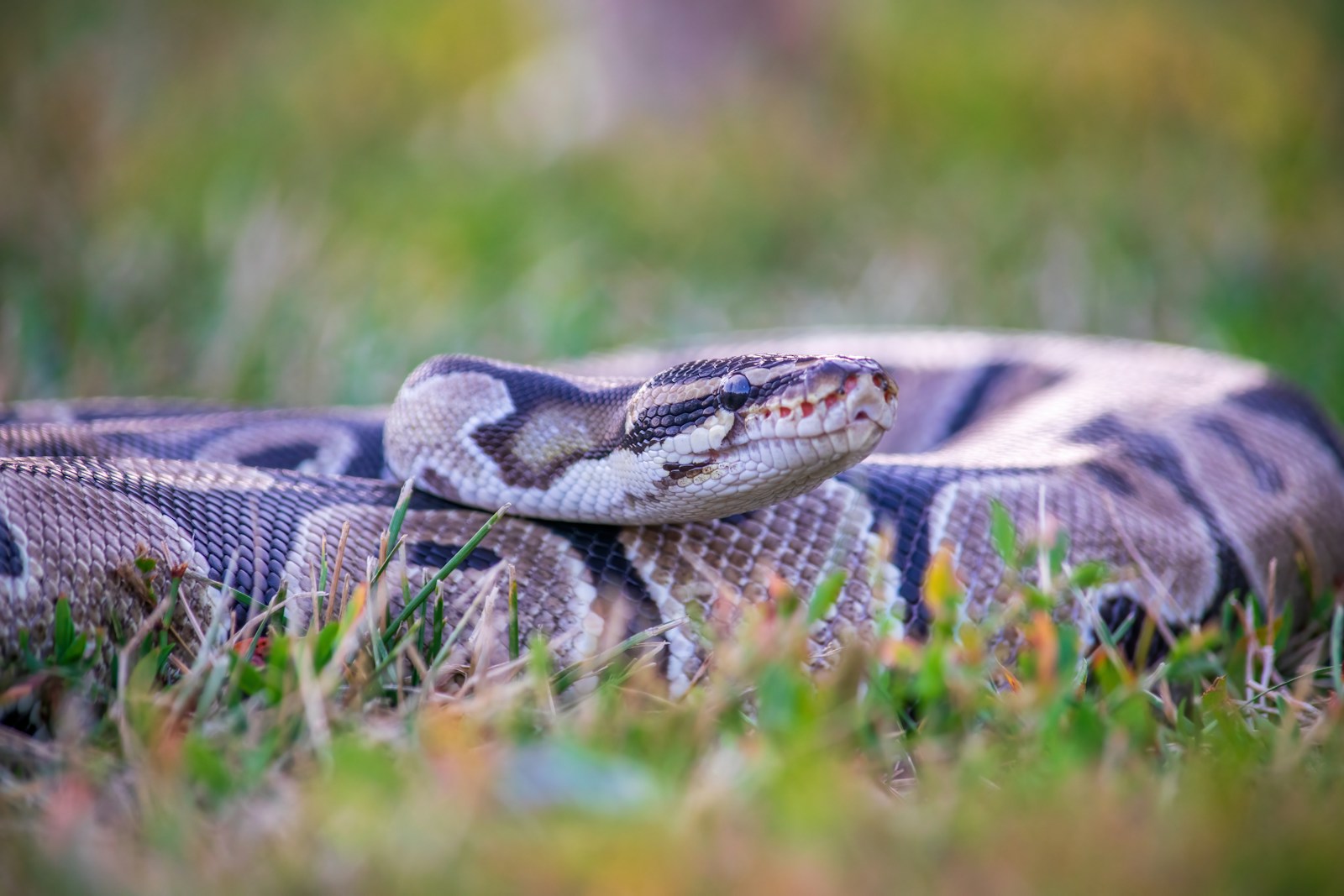
The very adaptations that make the Gaboon viper a master of disguise also make it vulnerable to specific environmental threats, particularly habitat destruction. While not currently listed as endangered, populations are declining across much of their range due to accelerating deforestation of African rainforests for agriculture, logging, and development. The snake’s specialized camouflage works only in undisturbed forest environments with natural leaf litter accumulation—conditions rapidly disappearing across their native range. Additionally, these slow-moving snakes frequently fall victim to road mortality when attempting to cross the increasing number of highways fragmenting their habitat. In some regions, Gaboon vipers face pressure from collection for the exotic pet trade, where their striking appearance and rarity command high prices despite the extreme danger they pose to inexperienced handlers. Climate change presents another emerging threat, as shifting rainfall patterns alter the composition of forest floors where these highly specialized reptiles have evolved to disappear.
Similar Species and Convergent Evolution

The Gaboon viper’s leaf-mimicking camouflage represents one of nature’s most impressive examples of convergent evolution, where similar traits develop independently in unrelated species facing similar environmental pressures. Several other reptiles have evolved comparable adaptations, including the remarkably similar Rhinoceros viper (Bitis nasicornis), a close relative that shares habitat with the Gaboon viper in some regions. Half a world away, the Malayan pit viper (Calloselasma rhodostoma) has independently evolved leaf-like coloration for the forest floors of Southeast Asia, demonstrating how effective this evolutionary strategy is across different continents. Beyond reptiles, numerous insects show similar adaptations, with the dead leaf butterfly (Kallima inachus) of Asian forests providing perhaps the most striking parallel. Even some birds, like the Malaysian frogmouth, have developed plumage patterns that mimic decaying foliage. These examples of convergent evolution underscore how powerful the selective pressure for camouflage can be in predator-rich environments, repeatedly producing some of nature’s most sophisticated disguises.
Captive Care Challenges and Ethical Considerations
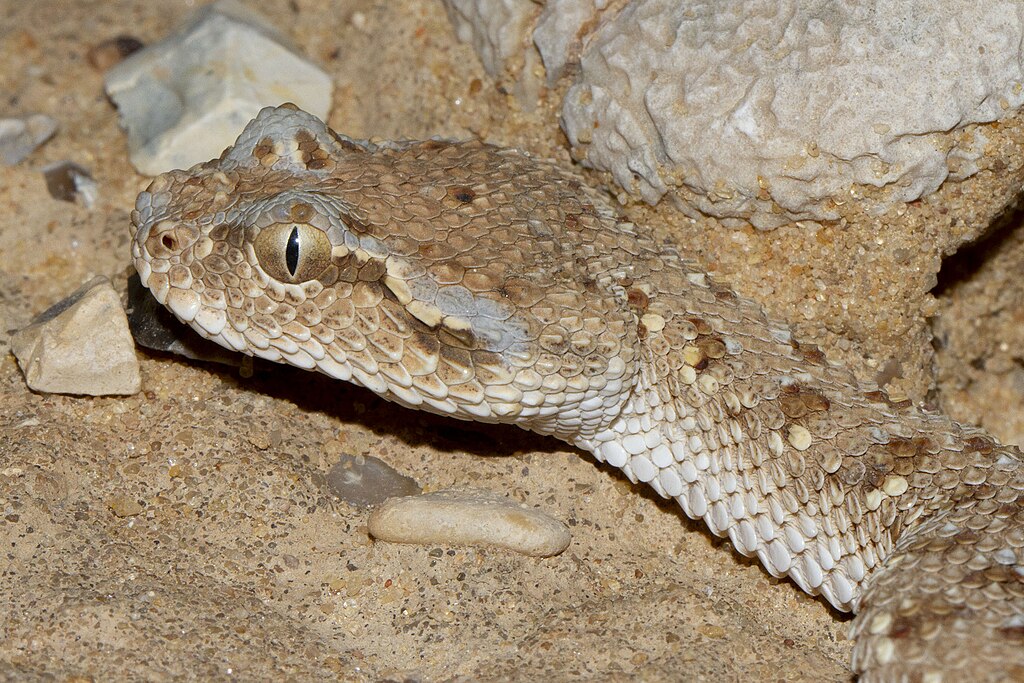
Maintaining Gaboon vipers in captivity presents extraordinary challenges that raise significant ethical questions about whether these specialized reptiles should be kept outside professional research and conservation facilities. Their specific environmental requirements—precise humidity levels, deep natural substrate, and extremely low stress environments—are difficult to replicate in captivity, leading many specimens to refuse food or develop health problems. The extreme danger posed by their venom requires specialized housing with multiple safety protocols, restricted handling procedures, and immediate access to appropriate antivenom—resources beyond most private keepers. Even in professional zoological institutions, Gaboon vipers often show reduced lifespans compared to wild counterparts, suggesting captivity fundamentally compromises their welfare regardless of care quality. Conservation biologists increasingly advocate that these specialized predators remain in their natural habitat, with captive specimens limited to accredited institutions engaged in research, education, and conservation breeding programs designed to support wild populations rather than supply the exotic pet trade.
The Gaboon viper’s remarkable ability to transform itself into a perfect facsimile of rotting leaves stands as one of nature’s most extraordinary examples of evolutionary specialization. This deadly artist of disguise reminds us that the natural world holds wonders that still surpass human technology in their sophistication and effectiveness. As rainforest habitats continue to face pressure from human activities, the future of this master of camouflage—and countless other specialized species—hangs in the balance. Their preservation depends not just on appreciating their remarkable adaptations but on protecting the complex environments that shaped them. In the Gaboon viper, we find a perfect symbol of nature’s hidden complexity—a deadly predator that disappears completely into the backdrop of its world, revealing itself only to those patient and observant enough to perceive the extraordinary concealed within the seemingly ordinary forest floor.

